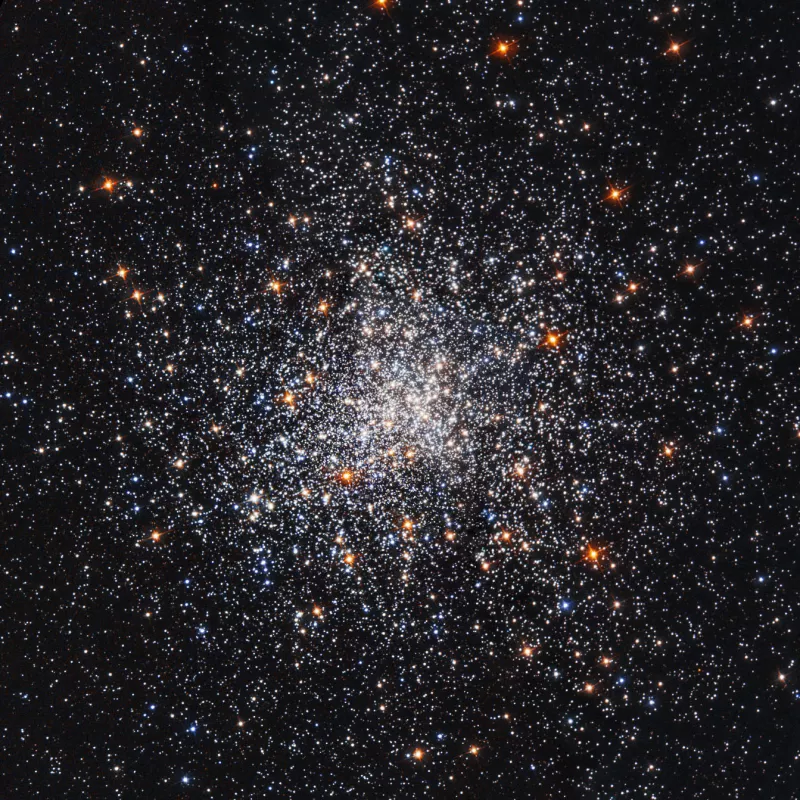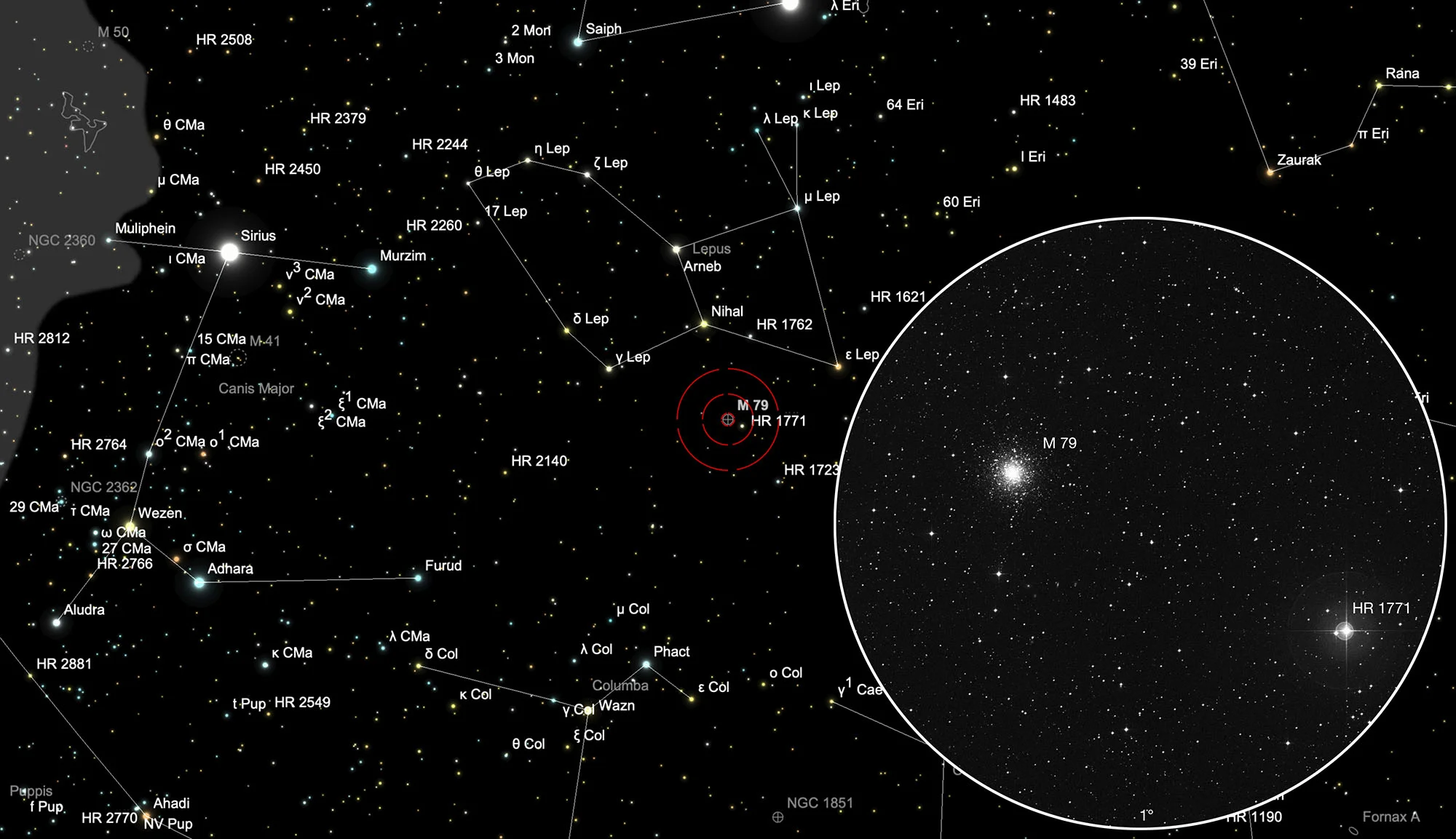Globular Cluster Messier 79

History
The globular cluster M 79 was discovered by Pierre Méchain on 26 October 1780. Charles Messier observed it on December 17th and wrote: «Starless nebula, below the hare and parallel to a star of the sixth magnitude: seen by M. Méchain on 26 October 1780. M. Messier looked for it on the following December 17th: This nebula is beautiful; the centre brilliant, the nebula diffuse: its position is determined by the rabbit's star ε, fourth magnitude.» [281]
Physical Properties
M 79 is about 41'000 light years away from Earth and contains about 150'000 stars, squeezed to a diameter of only 118 light years. Its age is estimated to be around 11.7 billion years. Most globular clusters cluster around the central area of our Milky Way disk. M 79 is on the side facing away from the centre, about 60'000 light years from the galactic centre. It is assumed that M 79 originally did not belong to the Milky Way, but rather is one of the globular clusters that were snatched from the Canis Major dwarf galaxy by tidal forces. The Canis Major Dwarf Galaxy (also CMa Dwarf or Canis Major Overdensity) was only discovered in 2003 and is partly located within the disk of our Milky Way. It is only 25'000 light years away and is therefore closer to us than the galactic centre. Due to strong tidal forces, it has an irregular shape and is in the state of dissolution. [196, 285]
| Designation | NGC 1904 |
| Type | GCL (V) |
| Right Ascension (J2000.0) | 05h 24m 10.6s |
| Declination (J2000.0) | -24° 31' 25" |
| Diameter | 9.6 arcmin |
| Visual magnitude | 7.7 mag |
| Metric Distance | 12.900 kpc |
| Dreyer Description | globular, pL, eRi, eC, rrr |
| Identification, Remarks | GC 1112; M 79; ESO 487-SC7; GCL 10 |
Finder Chart
M 79 is located south of Orion in the constellation Lepus. Extend the imaginary line of the two stars Arneb (α Leporis) to Nihal (β Leporis) by a little more than the same distance in a southerly direction. The globular cluster is only about half a degree away from the 5 mag bright star HR 1771. The best time to observe is August to May.
